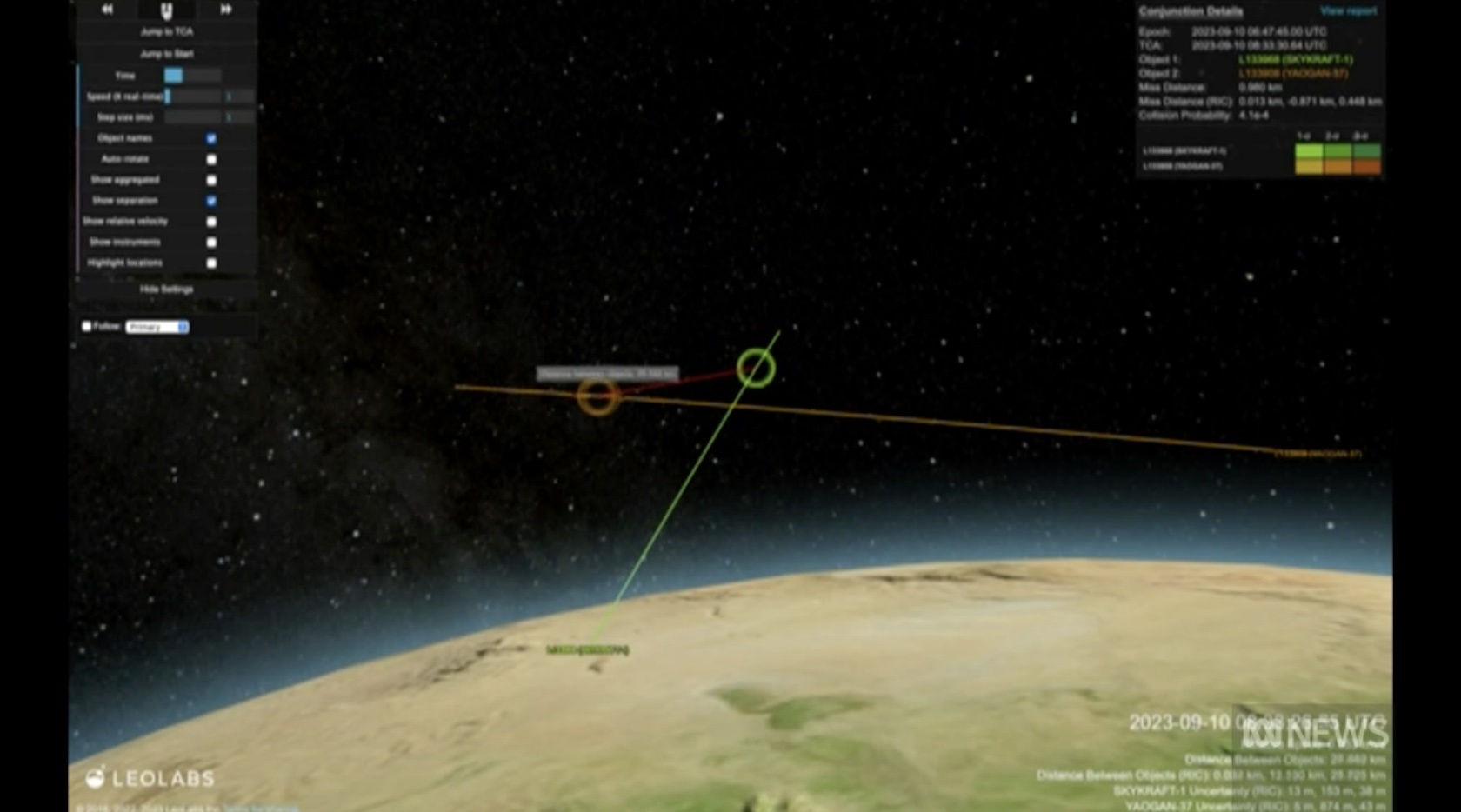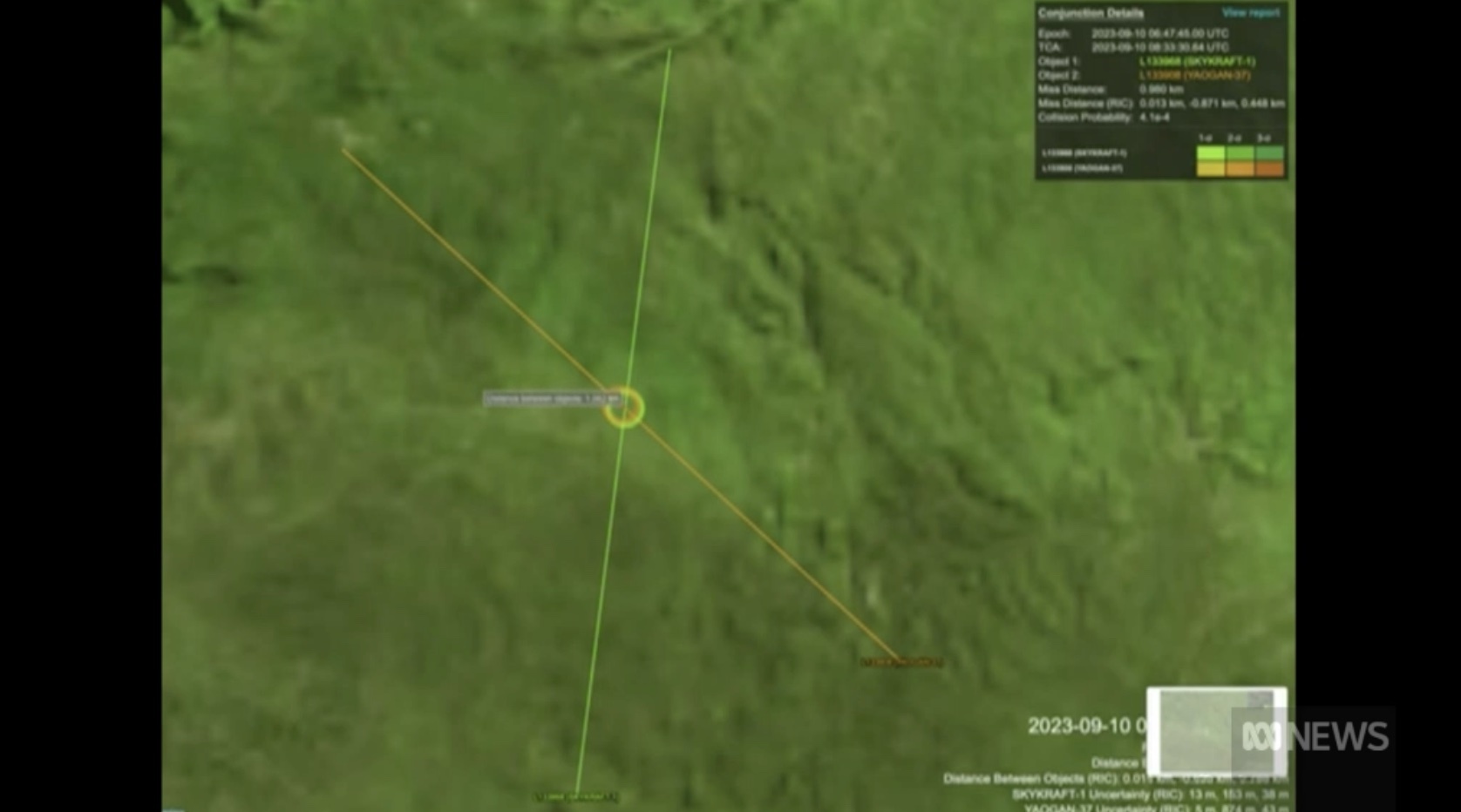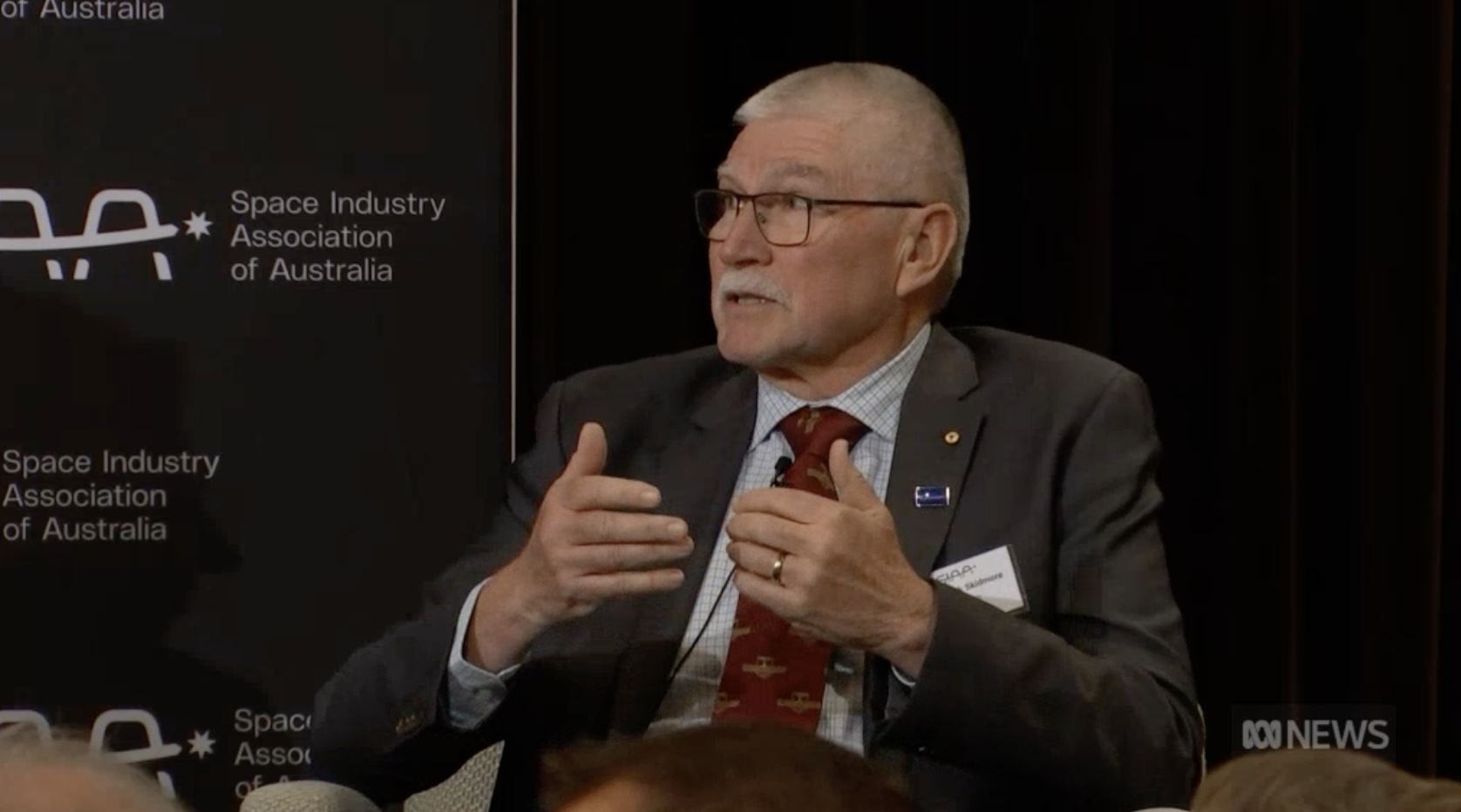24.10.2023




A Chinese military satellite came within hundreds of metres of colliding with an Australian satellite earlier this month, according to space data obtained by the ABC.
Details of the near miss have emerged as Australia’s Defence Space Commander warns the skies above Earth are becoming ever "riskier" as greater numbers of satellites are launched, including more sophisticated models equipped with "counter-satellite" technology.
Addressing the Space Industry Association of Australia, Air Vice-Marshal Cath Roberts described how Defence Space Command worked with Canberra based company Skykraft to manage the incident.
"Some initial analysis showed one of his satellites might be in a conjunction situation and we thought that it was originally within I think it was 9 kilometres, that of course concerned me," Air-Vice Marshal Roberts told the gathering of space industry representatives in Canberra.
"We were worried about the potential for creating debris … it was an interesting situation to work out."
Skykraft chairman Mark Skidmore says good communication with Defence Space Command, as well as the United States Air Force (USAF), was crucial to dealing with the "real-time congestion" threat.
"We had good communication to understand what the situation was, what potential for what could happen, and even the information regarding probability of [a] miss," the former RAAF officer said.
"Getting the information, being able to determine what course of action you can take if you can take one, or what the situation might be — what we did was activate our response plan which we had and made sure we were communicating the right information to the right people.
"We had communication with Space Command, with USAF at the same time because they were providing and feeding us information, so we had all the information we needed to understand our course of action."
Defence declining to provide information
The Defence Department has declined to provide any further information about the incident or to confirm whether the other satellite involved in the incident was believed to be operated by China's People's Liberation Army.
Analysis conducted after the event by the company LeoLabs shows both satellites were predicted to have an "miss" distance of just 100 metres 24 hours before the anticipated "conjunction".
According to the data, the Yaogan 37 satellite manoeuvred 16 hours prior to the conjunction, increasing the miss distance to 978 metres at the closest approach.
"Unfortunately these type of critical conjunctions occur on a nearly daily basis in low Earth orbit," says Terry van Haren, the managing director of LeoLabs Australia.
"Deconfliction between western satellites and Chinese and Russian systems is of course more complicated given the lack of communication and cooperation between these space users.
"This is something we are looking at in a commercial sense."
Australian Strategic Policy Institute analyst Malcolm Davis says two satellites coming within 9 kilometres of each other in space is "very close".
"It could have been very serious; these conjunctions do happen on a regular basis and many of them are very close indeed – if they were to collide then the satellite collision would produce large amounts of space debris," Dr Davis said.
"If you think about the vastness of space, even the region around the Earth is huge – 9 kilometres is a tiny 'miss' distance."
Dr Davis says it is possible the suspected Chinese satellite was deliberately trying to get close to the Australian commercial satellite for spying purposes.
"We are seeing more and more of this because space is becoming more crowded … we're seeing a lot more of these conjunctions occurring on a regular basis and I think the problem is only going to become more challenging in the future," he said.
Space commander says operations are becoming "riskier"
During her address to the Space Industry Association of Australia, the Defence Space Commander warned of the growing dangers in the increasingly congested domain.
"It's riskier. There's far more satellites up there, the counter satellite capabilities are significantly enhanced every time something is launched," Air-Vice Marshal Roberts said.
"The environment's changed so much, even since I've been the Space Commander — the Defence Space Command's only been in existence for 21 months.
"The congestion there, the number of satellites that are there, the sorts of capabilities that are in space that other potential adversaries may use against our satellites has really changed over that period of time."
Air-Vice Marshal Roberts said "level of change is just continuing".
"Seeing the number of launches every year and seeing the number of satellites that are going up — it's massively different," she said.
"With the proliferation in low Earth orbit [LEO] – there are a lot more sensors that potentially are looking at Australia on a fairly regular basis — but not just Australia, around the world, so the level of information about what's going on in the terrestrial space has increased significantly.
"So that's a big change I think in terms of how defence forces do their operations knowing that they'll be observed pretty much all the time."
In August the ABC revealed hundreds of Chinese satellites had been passing over Australia during large-scale international military exercises gathering intelligence on the United States and other allies.
